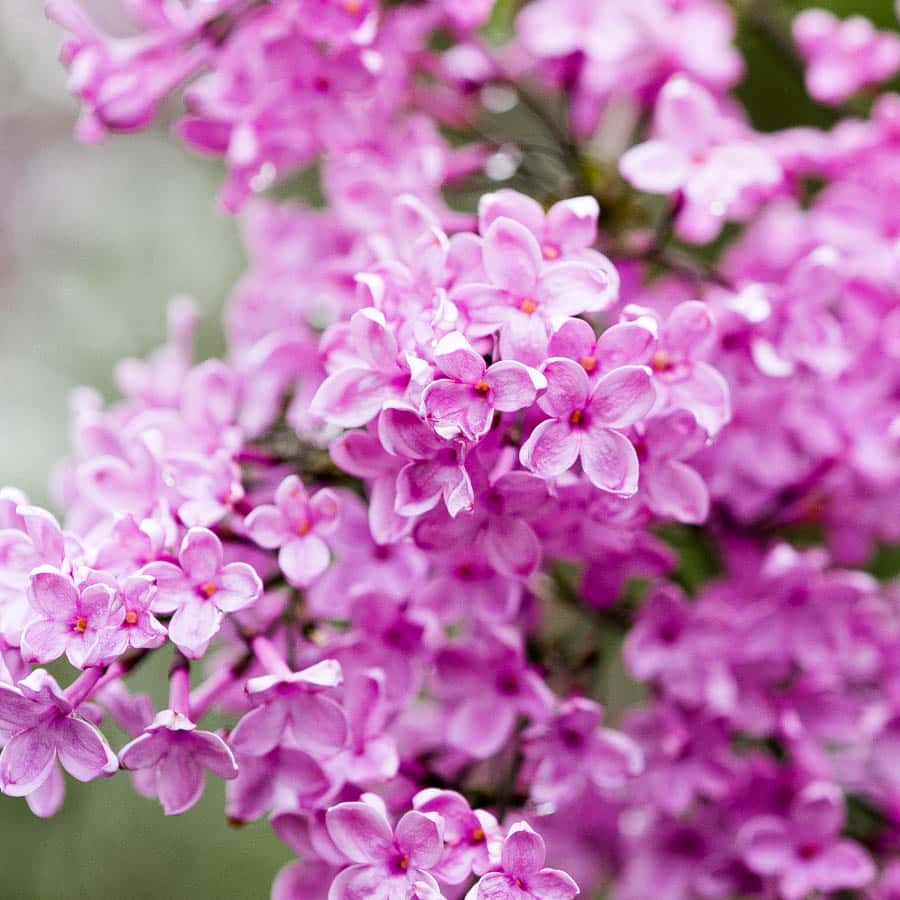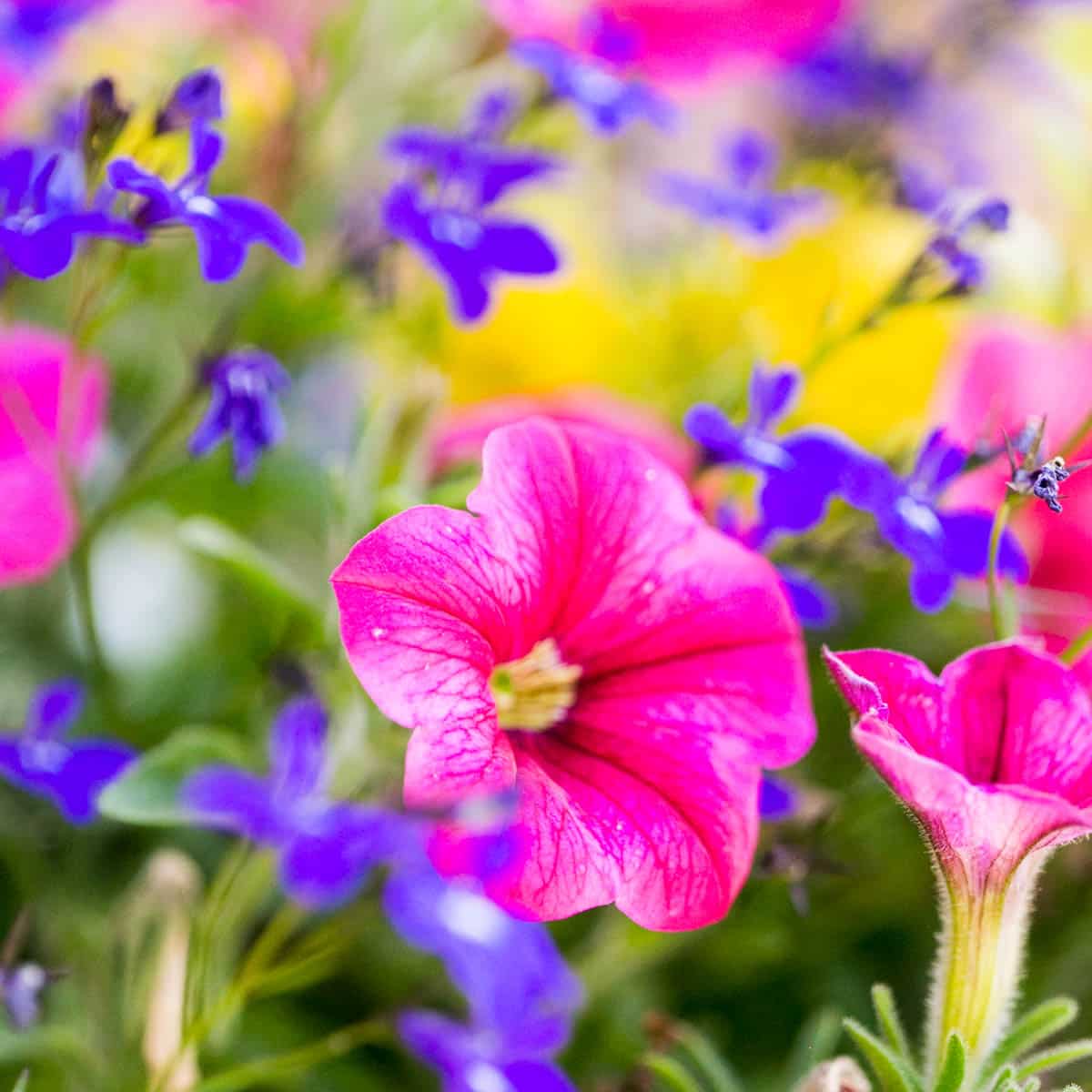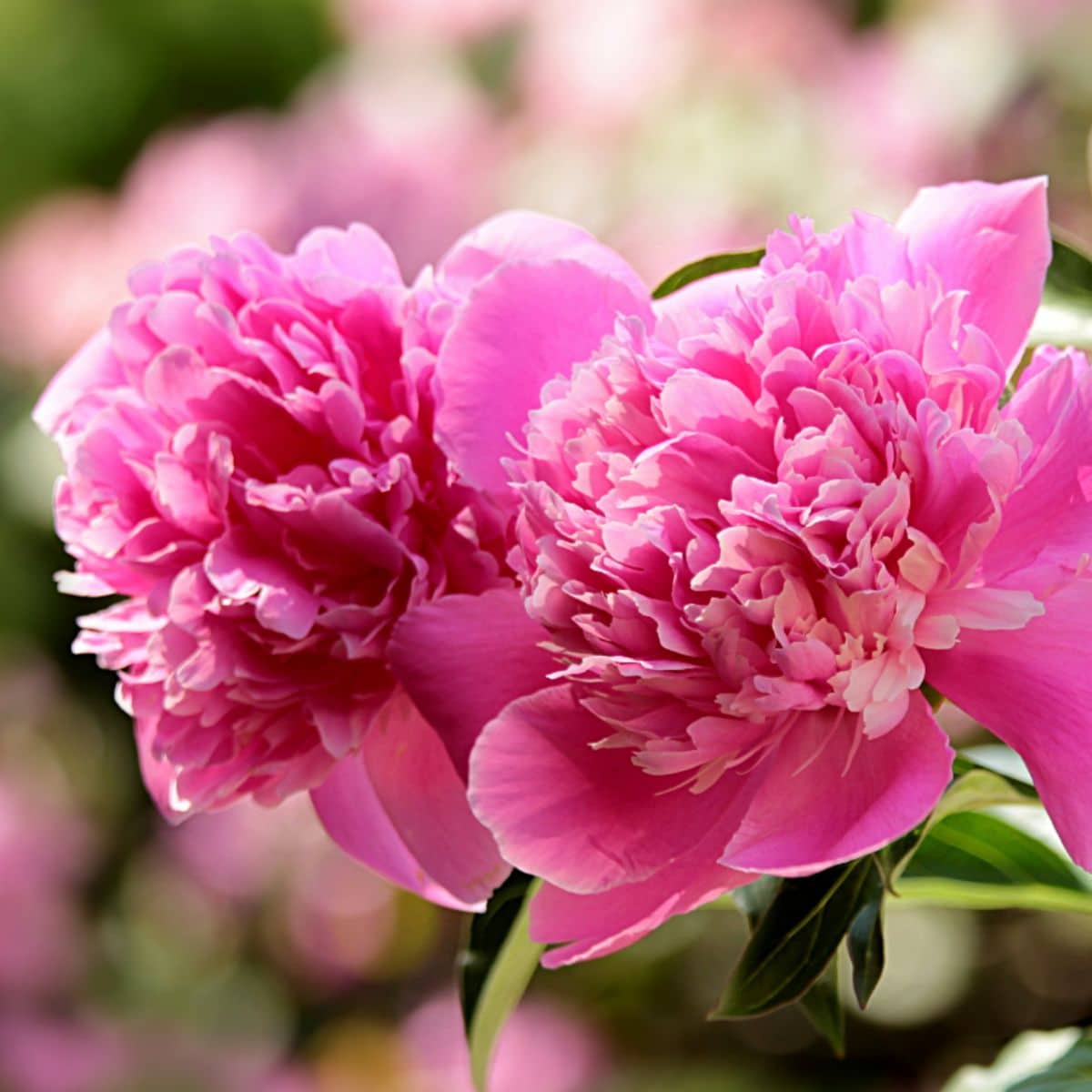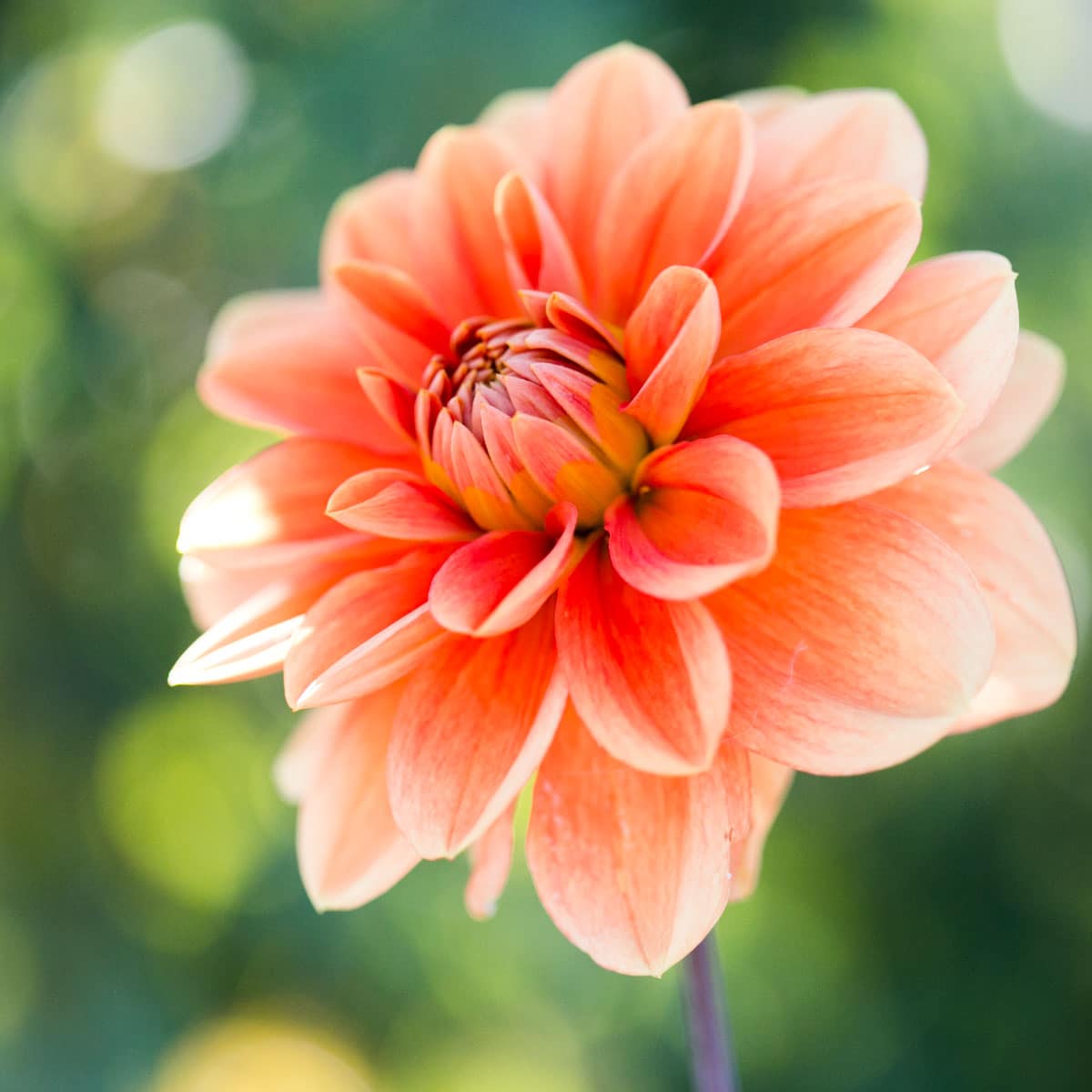10 Reasons Why Dahlias Don’t Bloom (Tips To Fix It!)
Learn the common reasons why dahlias don’t bloom- and what to do about it!
With huge blooms and beautiful hues, dahlia flowers are simply irresistible. These gorgeous flowers bloom all summer and up until the first frost of fall.
You may be eagerly awaiting stunning dahlia blooms only to find your dahlia plants aren’t producing flowers at all!

“Why are my dahlia flowers not blooming!?” scratching your head, you stare into the dull garden completely mystified.
Don’t worry, we’ve been there. And today we are sharing the 10 reasons dahlias don’t bloom and what you can do to fix the problem!
This post contains affiliate links. If you click through and make a purchase, we make a small commission at no extra cost to you.
10 Reasons Dahlia Flowers Don’t Bloom
If your dahlia flower buds aren’t blooming, it’s likely that they haven’t been given the right conditions in order to thrive. Here are ten reasons why your dahlia flowers aren’t blooming- and what to do about it!
1. Not Enough Sunlight
Dahlias love sunlight, and if they don’t catch enough rays they may fail to produce the beautiful blooms they are so famous for. These heat loving flowers thrive in sunlight.
If not given enough light, dahlias will not produce many blooms! Lack of sunlight is one of the main reasons dahlias fail to bloom.
Ideally, give your dahlia flowers at least 6 hours of direct sun. 8-10 hours hours of sunlight is even better!

If you live in a very hot climate, morning sun and afternoon shade will be perfect for your dahlia flower.
The late afternoon shade will protect the flower from intense heat, and the morning sun will give the flowers the light they crave!
Always make sure to understand the light around your home in different seasons. The light in winter will be drastically different than the light in summer. Sunlight will affect both the bloom time and the bloom production of your plant!
Learn about your USDA hardiness zone here.
Key takeaway: dahlias need full sun in order to bloom. Make sure your plants get 6-8 hours of direct sunlight per day.
2. Lack of Water Or Too Much Water
Dahlias need a lot of water in order to thrive. Lack of water will turn them into crispy little plants that have no flowers!
So make sure your dahlia plants get enough water, especially during the growing season and during heat spells. Another important aspect of proper watering is the quality of the soil: the plant needs good drainage so that the water does not sit on the tuberous roots.
Soil should be nutrient rich and porous so that it drains well. (Get the best tips for soil here!).

In moderate weather, water dahlias deeply once a week. As the weather heats up water more frequently.
Once the dahlia flower is a few inches tall, apply a mulch around the base of the plant to help retain moisture.
Dahlias grown in pots and containers will need to be watered more frequently than those plants in the ground. Check the soil daily and if the top inch of soil is dry water your potted dahlia. Drainage holes in the bottom of the container will prevent the roots from rotting!
Too much water, on the other hand, can cause dahlia tubers to rot and can contribute to poor soil health. Clay soils retaining too much moisture can affect the roots of the plant, contributing to root rot.
Root rot will affect the dahlia plant’s bloom production, encourage pests and disease, and will eventually kill your plant!
Amend clay soil by mixing in peat moss and organic matter to increase drainage.
Key Takeaway: Give your dahlias the right amount of water and good drainage. For best results: during cool weather give your dahlia less water, and when temperatures rise water your plants deeply several times a week. Dahlias enjoy well draining, moist soil and will bloom best when given proper watering care.
3. The Wrong Fertilizer
Did you know that different fertilizers tell a plant to do different things? Some fertilizers work specifically to promote blooms, and others promote foliage!
If given the the wrong fertilizer a dahlia plant will put it’s growth into leaves and foliage, instead of blooms.
Fertilizers consist of a specific NPK ratio, which stands for Nitrogen, Phosphorous, and Potassium.
Nitrogen will promote the growth of the leaves and foliage. Phosphorous promotes the growth of blooms! Too much nitrogen will result in the plant putting a lot of energy into it’s leaves and stems instead of flowers.

Dahlia flowers need a fertilizer with a high phosphorous number in order to increase their blooms. Giving them the wrong fertilizer can result in fewer blooms and a fuller, bushier plant!
Be sure to give your dahlia plant a quality fertilizer with a low nitrogen number and a higher phosphorous and potassium number, such as 5-10-10.
The nutrients in your soil can definitely affect plant bloom. It’s a good idea to test your soil and fertilizer your dahlia flowers with a phosphorous rich fertilizer as needed.
Key takeaway: Use the right fertilizer that is phosphorous rich and low in nitrogen. This will promote flower blooms instead of the growth of foliage.
4. Dahlias Have Not Been Pinched Or Deadheaded
Dahlias will branch out laterally and produce more flower stems + buds if they are “pinched” when they are young. Pinching refers to removing the center stem of the plant when it is around 10 inches tall.
Dahlias also need to have their spent flowers removed, which is referred to as deadheading.
Deadheading the flowers will stimulate the plant to put it’s energy into new blooms. To deadhead, follow the flower stem back down from the flower head to the first set of leaves and cut the plant there with pruners or a sharp knife.
We make an effort to check our dahlia flowers every few days for spent blooms. The faster they are removed, the sooner the plant will put it’s energy into new blooms!

Pay close attention when deadheading and make sure you do not remove flowers that are in bud!
We have an excellent guide, complete with photos, on how to deadhead dahlias here.
Deadheading dahlias allows your plant to produce many flowers all summer long (sometimes hundreds!). If you want your dahlia to reach it’s full potential, be sure to regularly deadhead it.
Key takeaway: Dead flowers must be removed in order to stimulate the production of new dahlia flowers! New flower buds will form on dahlia plants after the old flowers have been deadheaded.
5. Dahlia Tubers Have Rotted
Did you know that dahlia tubers need warm soil in order to thrive? Ground temperatures need to be in the warm 60’s before planting tubers.
If dahlia tubers are planted too early, the cold soil can prevent the tubers from growing.
And if dahlias are left in the ground in colder climates, the cold temperatures + frost can harm the dahlia tuber and even cause it to die. If you live in a cold climate, digging up the dahlia tuber is an important step in protecting the plant.
In warmer climates, dahlias can be over wintered in the ground. Adding a layer of mulch to the top of the soil can help give extra warmth in winter.
Dahlias are typically winter hardy only in zones 8-10. (Well-drained soil is also important in keeping tubers from rotting!).
Key Takeaway: Wait until the soil is warm before planting dahlia tubers. Depending on your zone, this may be late spring and even early June. Cold soil can harm the dahlia tuber and prevent it from growing + producing blooms.
Learn about one of our favorite dahlias, Cafe Au Lait here!

6. Dahlia Tubers Are Old + Not Prolific
A healthy dahlia tuber can bloom up to five years without being dug up (in the right climate). If you notice that your plant is beginning to decrease in flower production, it is time to dig the dahlia tuber up and divide it.
The new tubers can be planted as separate dahlia plants, giving you that many more flowers to enjoy.
Keep in mind that there are many types of dahlias, and you may get a longer lifespan and more blooms from one variety over another!
Key takeaway: Old dahlia tubers will not be as healthy and have less blooms. Divide dahlia tubers to increase bloom production and garner new plants!
7. Dahlias Are Being Attacked By Earwigs + Pests
Dahlia tubers make a tasty snack for earwigs, and these aggressive bugs will shred dahlia blooms and cause the petals to fall.
Earwigs can cause a lot of damage to dahlia flowers, and keeping them in check is essential for healthy flower blooms. Large dahlias with big flower petals are specially attractive to earwigs.
There are many safe, natural ways to ward off earwigs.
Smearing vaseline at the base of the plant can deter the nasty bugs and they won’t be able to climb past the stem. Diatomaceous earth is also a good option, however during heavy rain diatomaceous earth will lose it’s effectiveness.
You can even make a simple earwig trap!
Snails and slugs are also a nemesis to dahlia growers. Natural slug bait, like Sluggo, is a natural and easy solution.
8. Dahlias Are Planted Too Close Together
Dahlia flowers need spacing in order to maintain their health and flower production.
New gardeners may get excited and plant their dahlia flowers too close together. This causes the dahlia plants to fight for nutrients and fail to produce as many blooms.
Dahlias need ample room for their roots to grow, and adequate spacing will provide good air circulation and prevent fungal diseases like powdery mildew.
A good rule of thumb is to space dahlia plants 12-18 inches apart, and even further for larger varieties, like dinner plate dahlias.

9. Dahlia Tubers Were Planted Incorrectly
Dahlia tubers need to be planted in a specific way in order to grow and thrive!
If you plant a dahlia tuber upside down, it will not be able to send it’s roots down into the soil to grow the plant! Dahlia tubers can be confusing to plant, but always make sure that the “eyes” of the tuber are pointing straight up.
You do not want to plant dahlia tubers too deeply, either. Dig the dahlia hole just 4 to 6 inches deep, and place the dahlia tuber on it’s side with the eye face up.
10. Planting The Tuber At The Wrong Time
Native to Central America, dahlia flowers love heat and need warm soil before planted.
Dahlia tubers love warm soil, and planting a dahlia tuber too early can affect it’s change of growth. Cold soil and freezing temperatures can damage the dahlia tuber and limit it’s potential to produce dahlia buds.
It’s very important to plant dahlia tubers when the soil is warm enough: at least 50-60 degrees.
This should be long after danger of frost, although spring can be unpredictable at times! Check your last frost date and your soil temperature to make sure you plant your tuber at the right time.

On the other hand, you can plant dahlia tubers too late in the summer as well. Dahlia tubers planted in mid summer will not have time to fully develop flower blooms.
Dahlias bloom about 100 days after the plant has sprouted, so they need time to develop and produce blooms. Be sure to get your dahlia in the ground as soon as the ground is warm enough.
Dahlias are sensitive to a cold climate. In our Northern climate, we plant dahlia tubers in late May towards early June. Depending on the weather, the soil may not be warm enough until early summer! You’d be surprised at how quickly dahlias will grow in warm soil!
Key takeaway: Dahlias need to be planted at a specific time. If they are planted too early, cold soil and frost will damage the tuber. And if they are planted in mid summer they will not have enough time to grow and produce blooms. Make sure to plant dahlia tubers as soon as the soil is warm for the best blooming results!
Check your USDA hardiness zone here.

More Tips On Getting Dahlias To Bloom
Bonus tips on getting dahlias to bloom: The type of dahlia grown can affect how many blooms your flower produces, flower size, and when the dahlia blooms.
There are many different dahlia varieties, producing a huge variety in bloom sizes and colors. Young plants may not be as prolific as more established tubers.
And, there are literally thousands of different varieties of dahlias, all having a different blooming ability.
Growing dahlias is an adventure: you can always experiment with different varieties and flower styles to find what you like best!
Get our complete guide to growing dahlias here!
Final Thoughts
With vibrant blooms and the ability to produce flower buds well into fall, dahlias are one of the best flowers to grow. A healthy plant can produce hundreds of blooms through the growing season, lighting up for the garden with gorgeous blooms!
But dahlias can be a challenging plant to grow, with many problems that affect their blooming ability. We’ve outlined the most common dahlia bloom problems here- and how to fix them.
Following these tips, you should be able to trouble shoot and fix the problems that ail your dahlia flowers. Let us know in the comments below how your dahlias are doing-and if you have any questions on their bloom production!






